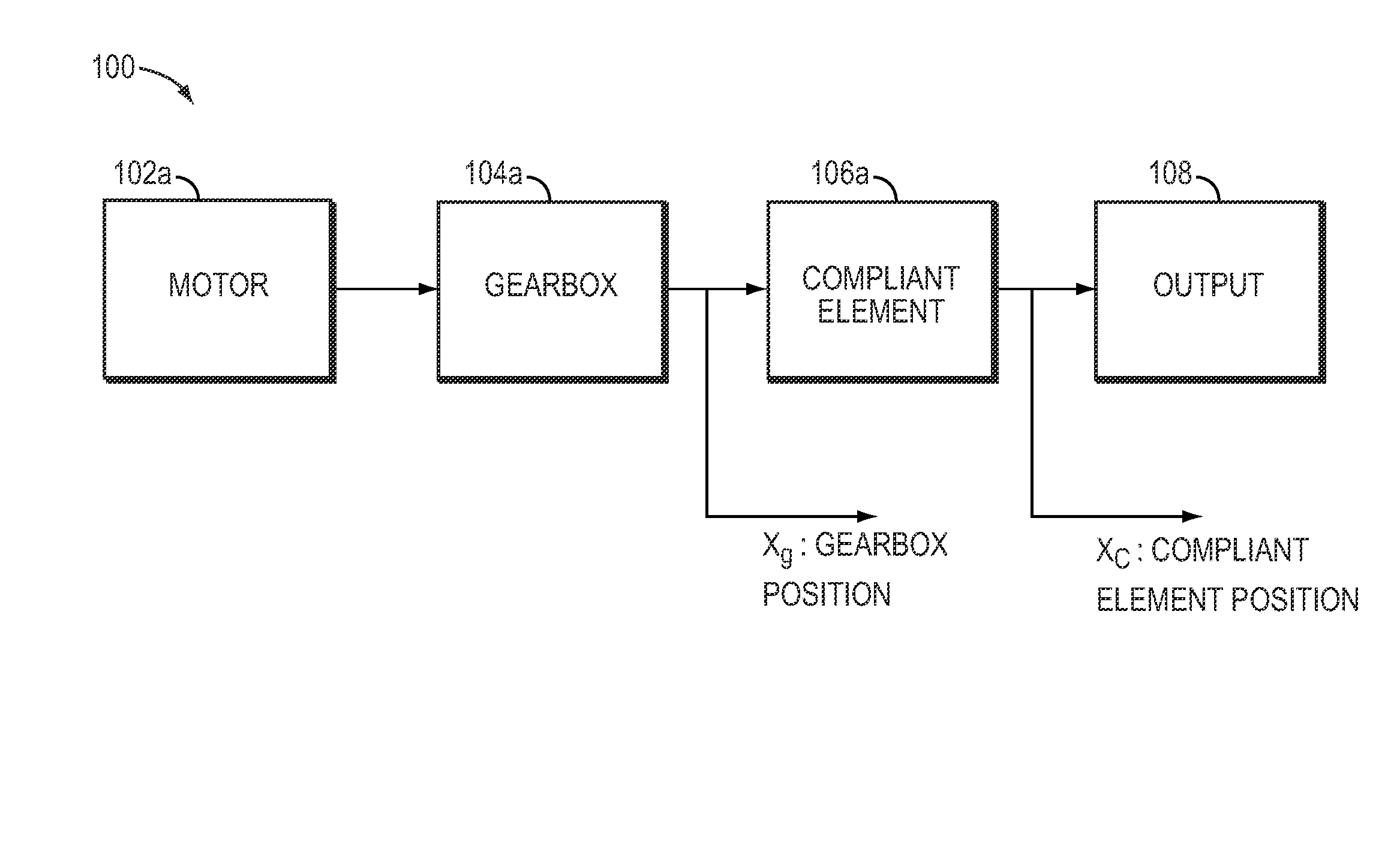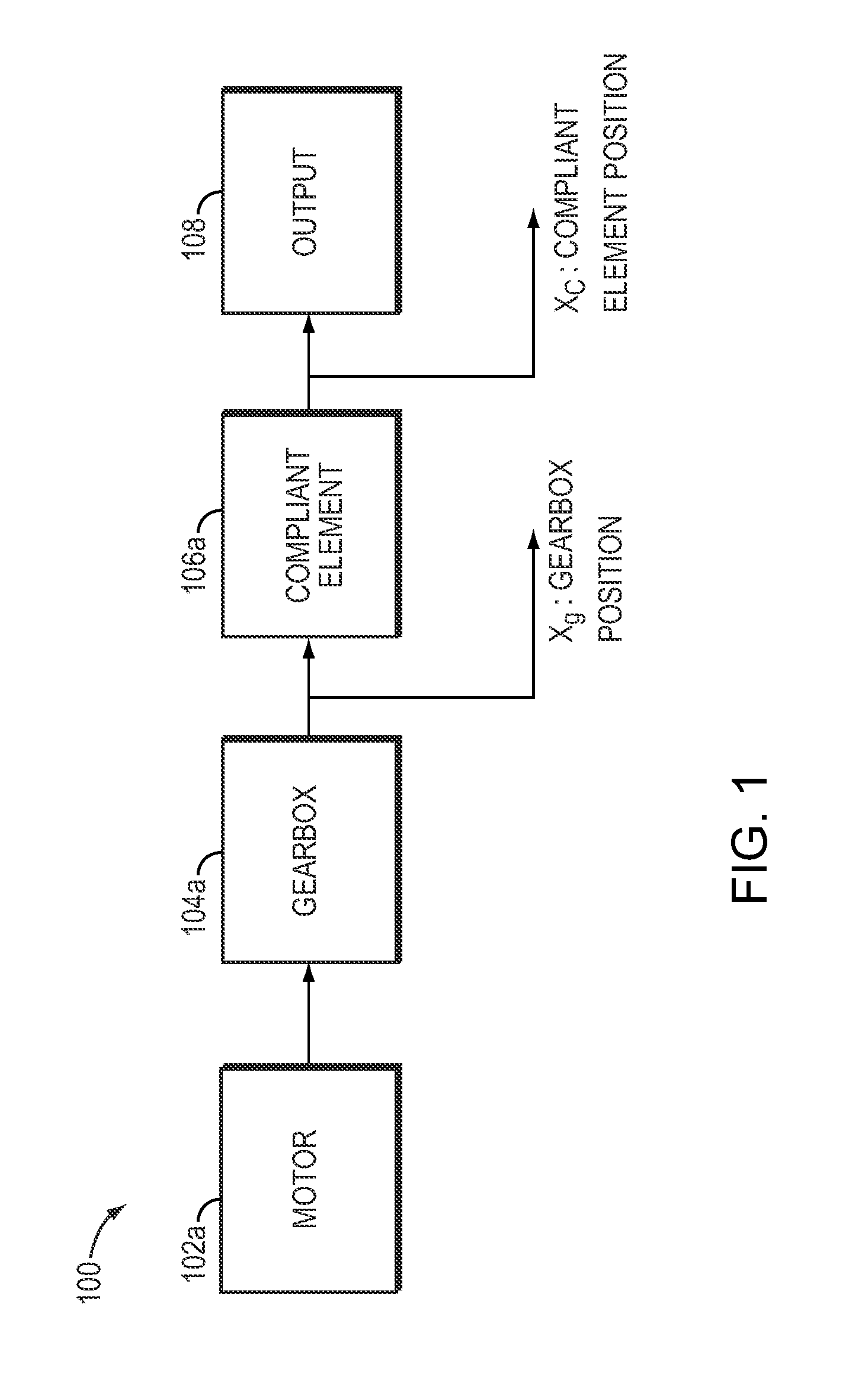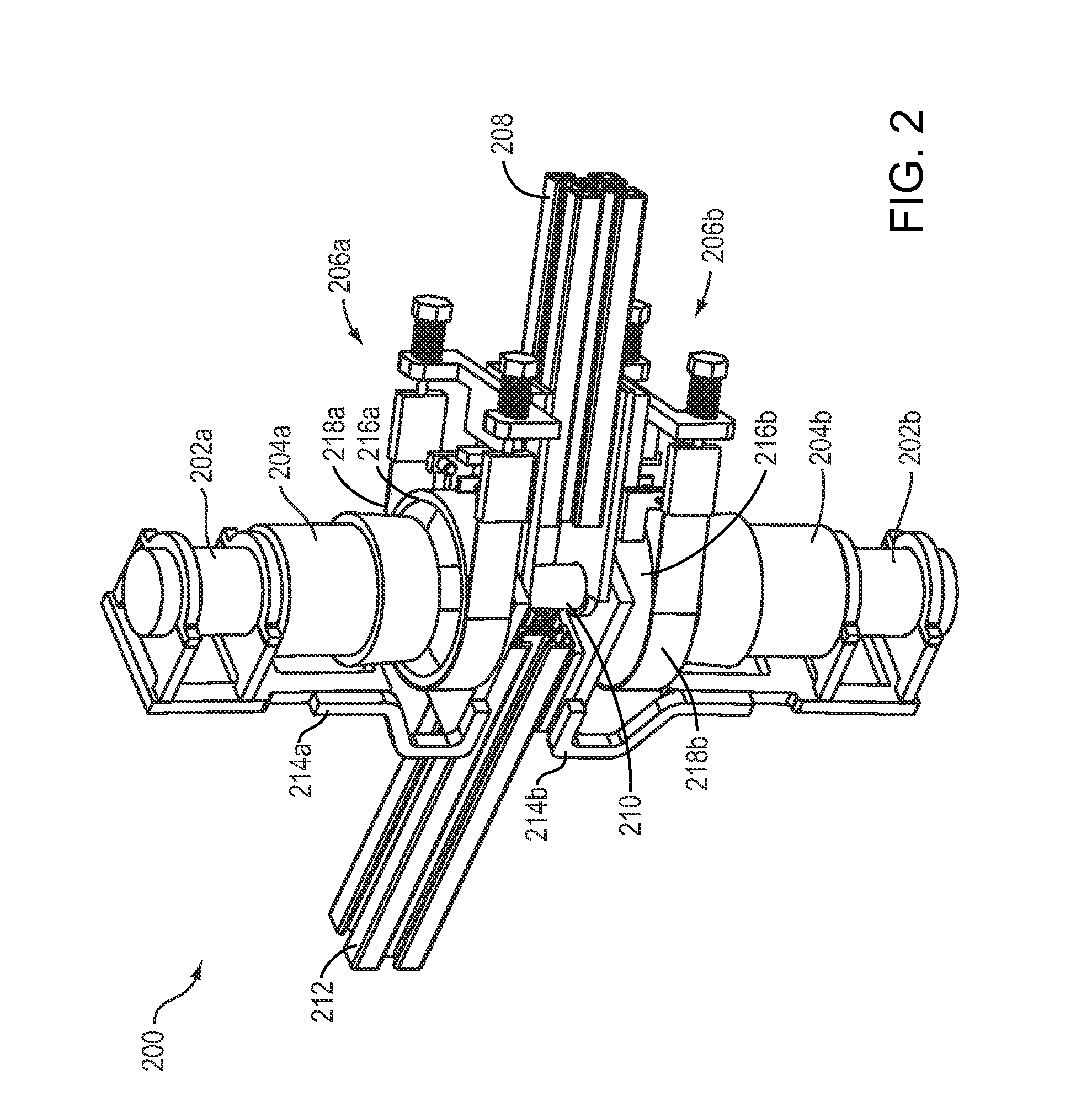Dual-motor series elastic actuator
a technology of elastic actuators and motors, applied in the direction of electric controllers, dynamo-electric converter control, hoisting equipment, etc., can solve the problems of different backlash, hysteresis, or dead-zone between each of the assemblies, and introduce backlash, hysteresis, and/or dead-zone, etc., to mitigate backlash, eliminate backlash, and eliminate backlash.
- Summary
- Abstract
- Description
- Claims
- Application Information
AI Technical Summary
Benefits of technology
Problems solved by technology
Method used
Image
Examples
Embodiment Construction
[0029]Generally, embodiments of the present invention reduce or minimize backlash by utilizing elastic elements to bias two separate intermediate mechanical outputs, which are driven by two separate mechanical inputs. Backlash may be defined as entry of a geared interface into an equilibrium band, which corresponds to the range of positions representing a zero torque output (i.e., the gear teeth are not in contact or out of mesh). Refer first to FIG. 1, which, for simplicity of illustration, conceptually depicts the components of a single actuator 100 with an input and an output and equipped, in accordance with an embodiment of the invention, to reduce backlash. The mechanical components corresponding to the blocks of FIG. 1 are illustrated in FIGS. 3 and 4, and FIG. 2 illustrates a complete dual-actuator system.
[0030]The actuator 100 includes a first motor 102a, a first gearbox 104a, a first compliant element (or intermediate mechanical component) 106a, and an output 108 coupled in...
PUM
 Login to View More
Login to View More Abstract
Description
Claims
Application Information
 Login to View More
Login to View More - R&D
- Intellectual Property
- Life Sciences
- Materials
- Tech Scout
- Unparalleled Data Quality
- Higher Quality Content
- 60% Fewer Hallucinations
Browse by: Latest US Patents, China's latest patents, Technical Efficacy Thesaurus, Application Domain, Technology Topic, Popular Technical Reports.
© 2025 PatSnap. All rights reserved.Legal|Privacy policy|Modern Slavery Act Transparency Statement|Sitemap|About US| Contact US: help@patsnap.com



